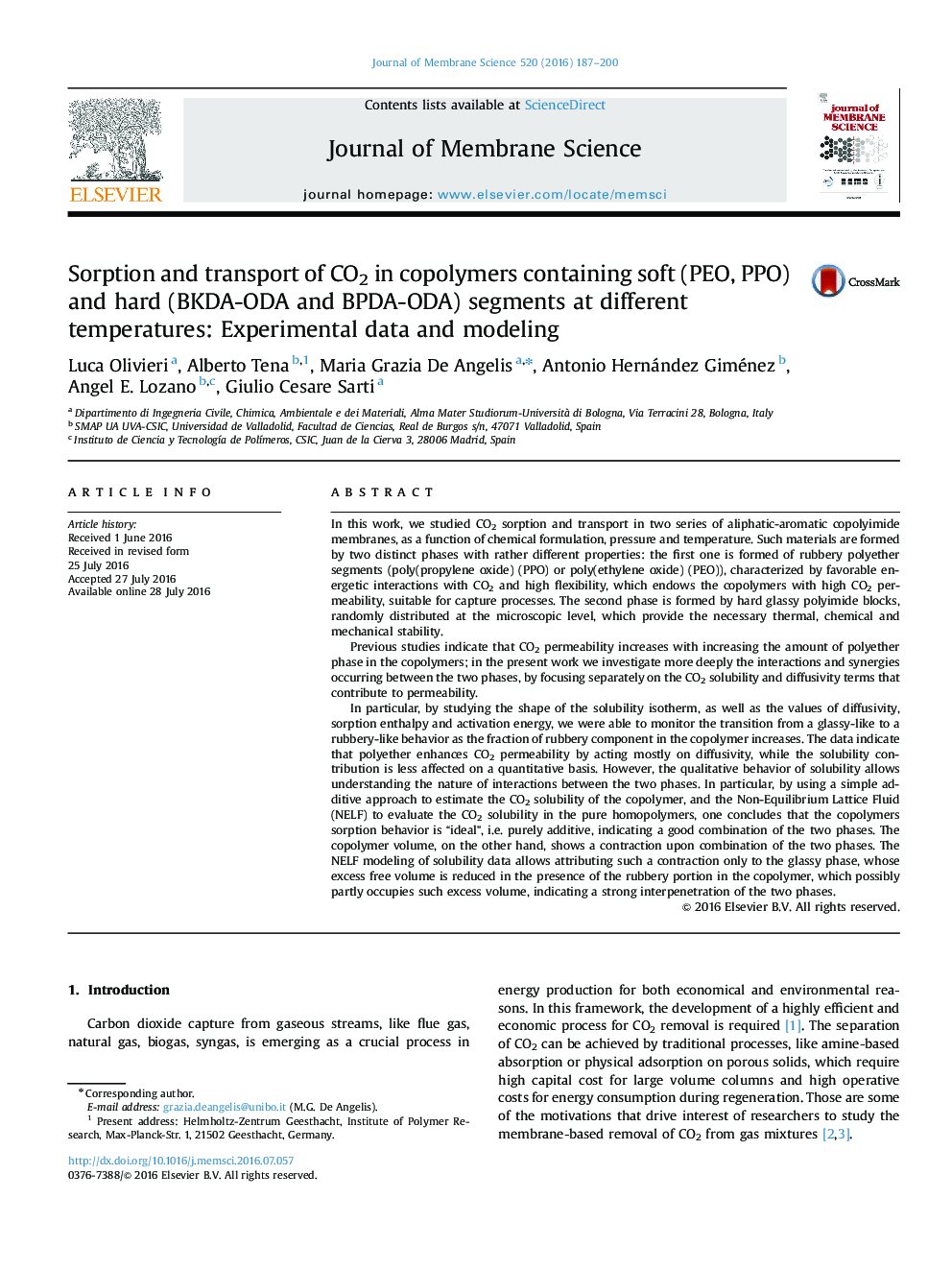| Article ID | Journal | Published Year | Pages | File Type |
|---|---|---|---|---|
| 632158 | Journal of Membrane Science | 2016 | 14 Pages |
Abstract
In particular, by studying the shape of the solubility isotherm, as well as the values of diffusivity, sorption enthalpy and activation energy, we were able to monitor the transition from a glassy-like to a rubbery-like behavior as the fraction of rubbery component in the copolymer increases. The data indicate that polyether enhances CO2 permeability by acting mostly on diffusivity, while the solubility contribution is less affected on a quantitative basis. However, the qualitative behavior of solubility allows understanding the nature of interactions between the two phases. In particular, by using a simple additive approach to estimate the CO2 solubility of the copolymer, and the Non-Equilibrium Lattice Fluid (NELF) to evaluate the CO2 solubility in the pure homopolymers, one concludes that the copolymers sorption behavior is “ideal”, i.e. purely additive, indicating a good combination of the two phases. The copolymer volume, on the other hand, shows a contraction upon combination of the two phases. The NELF modeling of solubility data allows attributing such a contraction only to the glassy phase, whose excess free volume is reduced in the presence of the rubbery portion in the copolymer, which possibly partly occupies such excess volume, indicating a strong interpenetration of the two phases.
Related Topics
Physical Sciences and Engineering
Chemical Engineering
Filtration and Separation
Authors
Luca Olivieri, Alberto Tena, Maria Grazia De Angelis, Antonio Hernández Giménez, Angel E. Lozano, Giulio Cesare Sarti,
